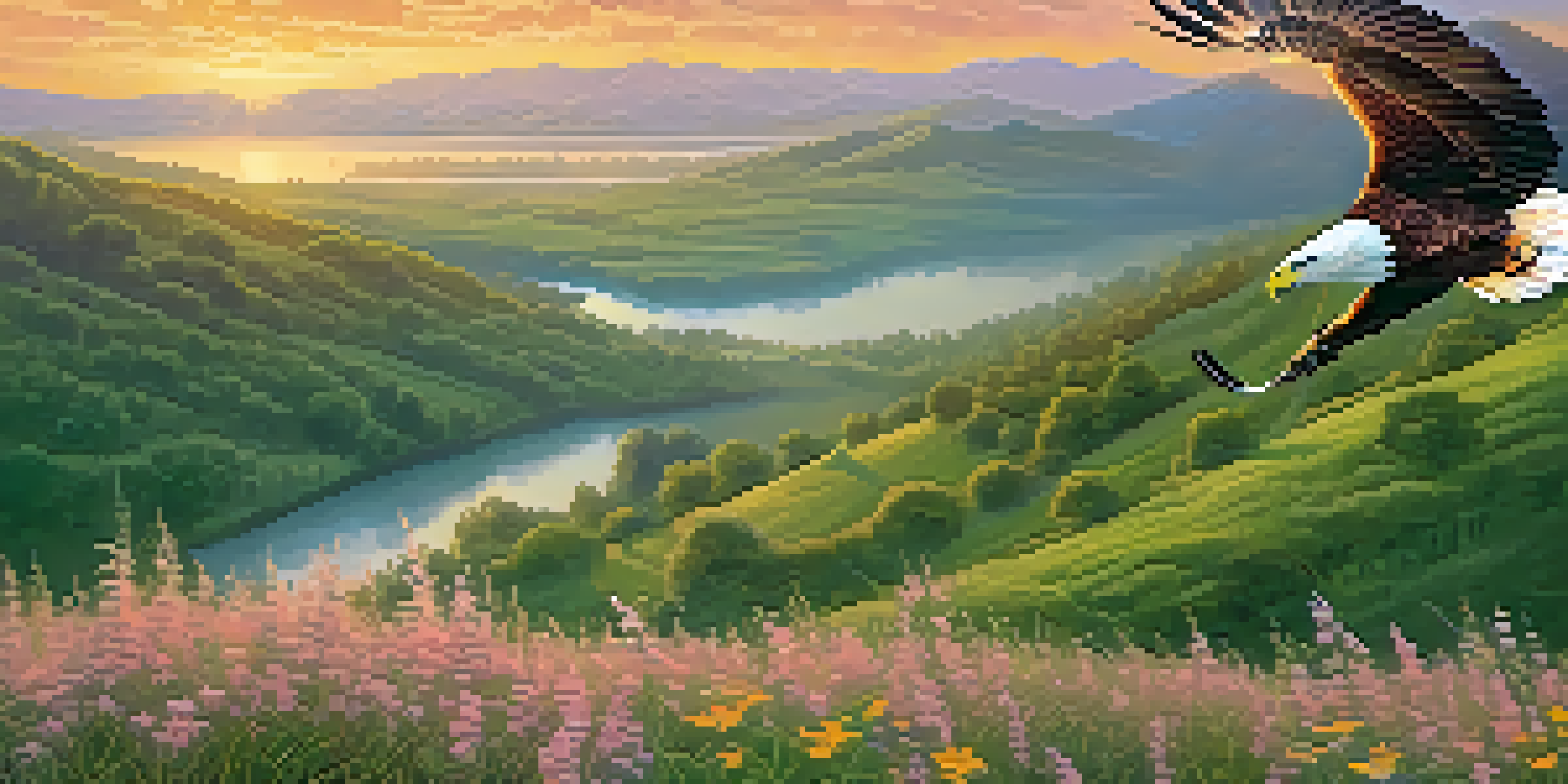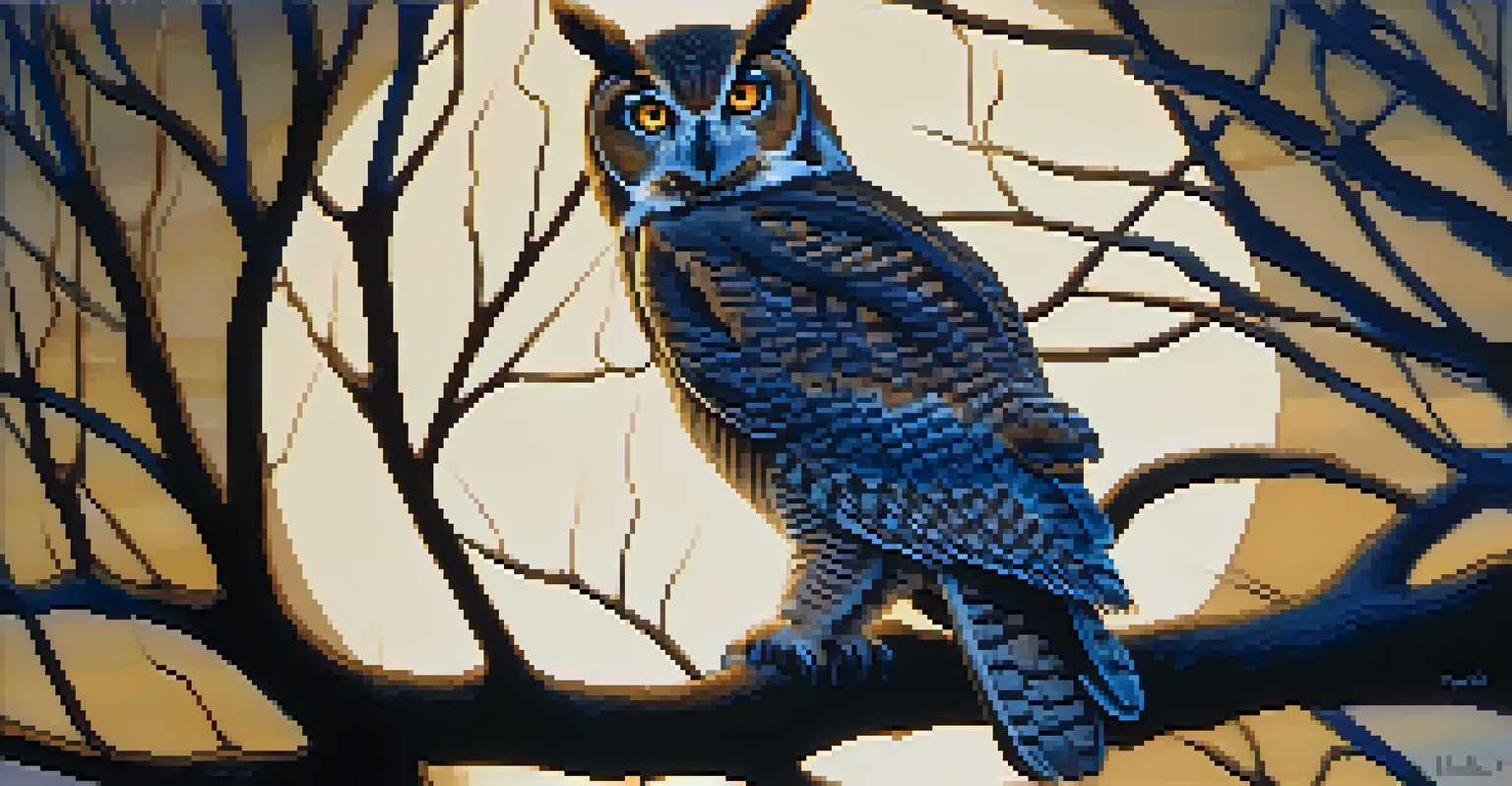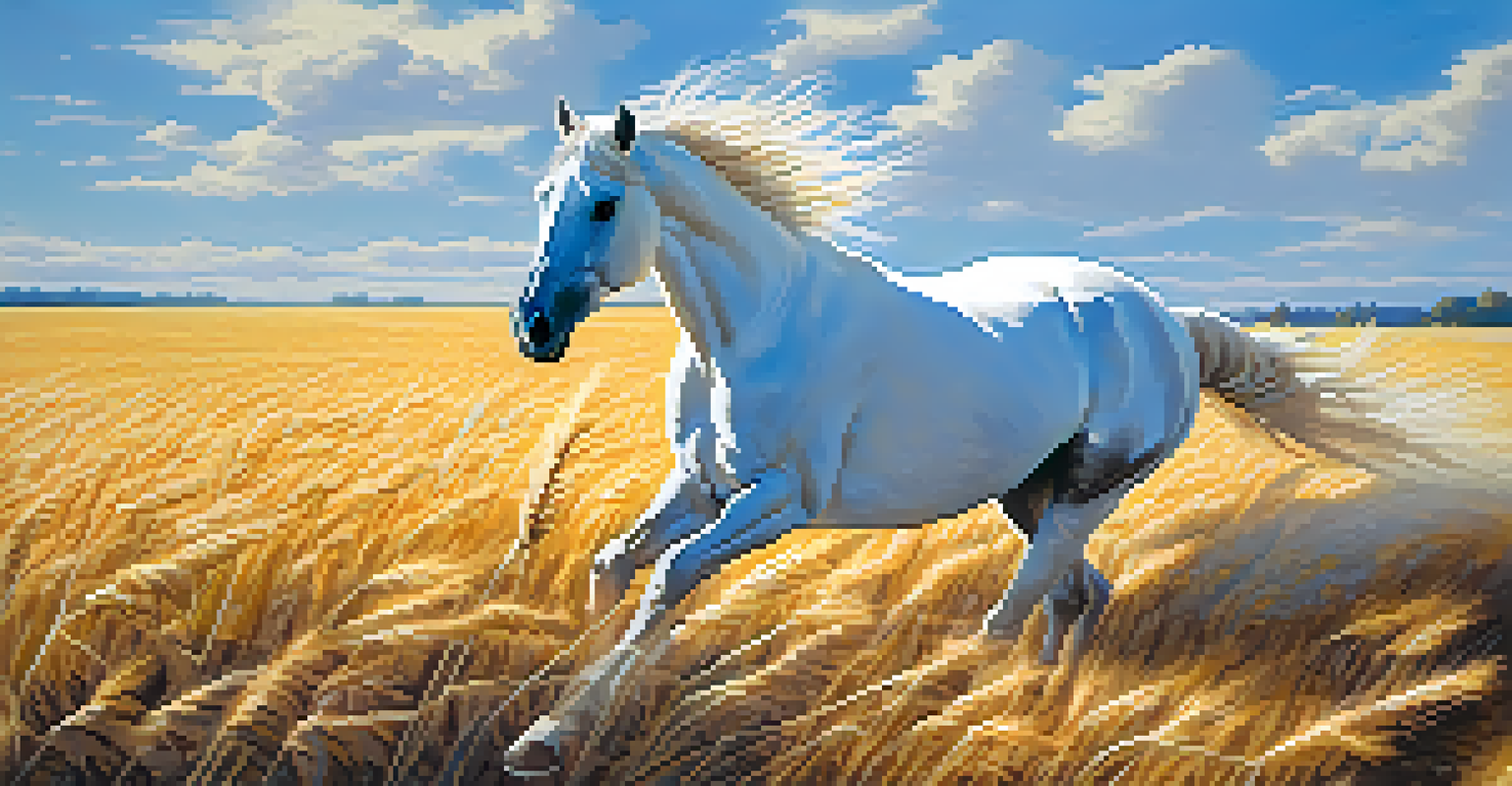The Use of Animals as Symbols in Various Art Movements

Understanding Animal Symbolism in Art
Animal symbolism has been a powerful tool in art for centuries, conveying emotions, ideas, and cultural beliefs. Artists often use animals to represent traits like strength, wisdom, or freedom, making their work resonate on a deeper level. For example, the lion often symbolizes courage and royalty, while the dove represents peace. This rich symbolism allows viewers to connect with the artwork beyond its surface.
The artist is a receptacle for the emotions that come from all over the place—from the sky, from the earth, from a scrap of paper, from a passing stranger.
Different cultures interpret animal symbols uniquely, shaped by their histories and beliefs. In ancient Egypt, for instance, cats were revered and associated with the goddess Bastet, symbolizing protection and fertility. This connection influenced countless artworks, from paintings to sculptures, celebrating the feline's significance. Thus, understanding the cultural context enhances our appreciation of these symbols in art.
As we explore various art movements, we will see how artists incorporate animal symbolism to express their messages. From the Renaissance to modern art, animals serve as both subjects and metaphors, adding layers of meaning that invite analysis and interpretation. So, let's dive into some key art movements and discover how these symbols evolve over time.
Animal Symbolism in Ancient Art
In ancient art, animals often held sacred or symbolic meanings that reflected the beliefs of the time. For instance, in prehistoric cave paintings, animals depicted were not just subjects of interest but also represented the hunt or spiritual beliefs. These early artists used animals as a way to communicate their relationship with nature and the divine, creating a narrative that transcends time.

Similarly, in ancient Greek art, animals like the eagle and the owl had distinct symbolic meanings. The eagle was often associated with Zeus, symbolizing power, while the owl represented Athena, the goddess of wisdom. These images were not merely decorative; they conveyed stories and values central to Greek culture, influencing countless generations of artists who followed.
Cultural Context Shapes Symbolism
Animal symbolism varies across cultures, reflecting unique beliefs and histories that enhance the viewer's connection to the artwork.
The use of animals in ancient art sets the stage for their continued relevance in later movements. By establishing a strong connection between animals and cultural identity, these early artworks laid the groundwork for how animals would be perceived and utilized in various artistic expressions throughout history.
Renaissance Art and Animal Symbolism
The Renaissance marked a significant shift in the use of animal symbolism, as artists began to explore the natural world with greater realism. In this period, animals were often depicted alongside human figures, enhancing the narrative quality of the artwork. For example, in Leonardo da Vinci's 'The Virgin of the Rocks,' the presence of a lion symbolizes strength and courage, enriching the overall message of the piece.
Art is the most beautiful of all lies.
Moreover, animals often served as allegorical figures during the Renaissance. For instance, the use of the peacock, symbolizing immortality and resurrection, frequently appeared in religious paintings. This layer of symbolism invited viewers to engage with the artwork on multiple levels, prompting them to consider the spiritual implications of the animals depicted.
As artists embraced humanism, the relationship between humans and animals became a focal point in their works. This exploration of animal symbolism not only reflected the artists' observations of nature but also highlighted the interconnectedness of all living beings, paving the way for later artistic interpretations.
Symbolism in Romanticism: Nature and Emotion
The Romantic movement celebrated nature and individual emotions, and animals played a crucial role in this artistic expression. Artists like Caspar David Friedrich used animals to evoke feelings of solitude and introspection. In his painting 'Wanderer above the Sea of Fog,' the presence of a distant bird adds a sense of freedom and connection to nature, amplifying the viewer's emotional response.
Additionally, the use of animals in Romantic art often symbolized the wild and untamed aspects of nature. The horse, for instance, represented strength and the spirit of freedom, commonly depicted in the works of artists such as Eugène Delacroix. These representations reflect the Romantic ideal of celebrating the sublime beauty of the natural world and the emotions it inspires.
Art Movements Evolve Animal Use
From ancient art to modern expressions, animals have been used to convey complex themes, emotions, and social commentary.
Through animal symbolism, Romantic artists sought to express the complexity of human experience. By intertwining animal imagery with themes of nature and emotion, they created a dialogue that resonates with viewers, allowing them to reflect on their own feelings and connections to the world around them.
Impressionism and Animals in Everyday Life
Impressionism marked a shift in artistic focus, with artists capturing the fleeting moments of everyday life. In this context, animals became integral to portraying daily scenes and the vibrancy of nature. Artists like Édouard Manet often included animals in their works, such as in 'Olympia,' where the cat symbolizes independence and femininity.
This movement emphasized light and color over detailed realism, allowing animals to be depicted in a more spontaneous and natural manner. Claude Monet's 'Water Lilies' series, while primarily focused on aquatic plants, also features swans that enhance the peacefulness of the scene. These animals contribute to the overall atmosphere, inviting viewers to immerse themselves in the moment.
Impressionist artists often used animals to reflect their own experiences and emotions, making them relatable to the audience. By integrating animals into scenes of everyday life, they offered a fresh perspective on how humans interact with the natural world, highlighting the beauty found in simplicity.
Surrealism: Animals and the Subconscious
Surrealism introduced a fascinating dimension to animal symbolism, exploring the subconscious mind and dreams. Artists like Salvador Dalí used animals to represent hidden fears and desires, challenging viewers to confront their own interpretations. In works like 'The Elephants,' the exaggerated, dreamlike portrayal of elephants symbolizes weighty thoughts and memories, creating a striking visual impact.
The use of animal imagery in surrealism often diverged from traditional representations, blending reality with fantasy. This can be seen in Max Ernst's 'The Elephant Celebes,' where the creature appears both familiar and alien, evoking a sense of unease. Such depictions encourage viewers to question their perceptions and delve into the emotional depths of their experiences.
Animals Bridge Consciousness and Emotion
Artists utilize animals to explore the subconscious, creating layers of interpretation that resonate with human experience.
By incorporating animals into their dreamlike narratives, surrealist artists invite reflection on the complexities of human existence. These symbolic representations serve as a bridge between the conscious and the subconscious, illustrating how animals can embody our innermost thoughts and feelings.
Modern Art: Reinterpreting Animal Symbolism
In modern art, the reinterpretation of animal symbolism has taken on new forms and meanings. Artists like Pablo Picasso used animals not just as representations but as vehicles for exploring identity and social commentary. In his famous painting 'Guernica,' the horse and dove symbolize suffering and peace, respectively, reflecting the turmoil of war and the hope for resolution.
Contemporary artists continue to harness the power of animals in their work, often using them to comment on environmental issues or societal challenges. For instance, Banksy's works frequently feature animals in urban settings, addressing topics like consumerism and habitat destruction. These modern interpretations highlight the evolving relationship between humans and animals in a rapidly changing world.

The fluidity of animal symbolism in modern art demonstrates its ongoing relevance and adaptability. By reimagining traditional symbols, contemporary artists invite viewers to engage with both the artwork and the pressing issues of our time, fostering a deeper understanding of the world around us.